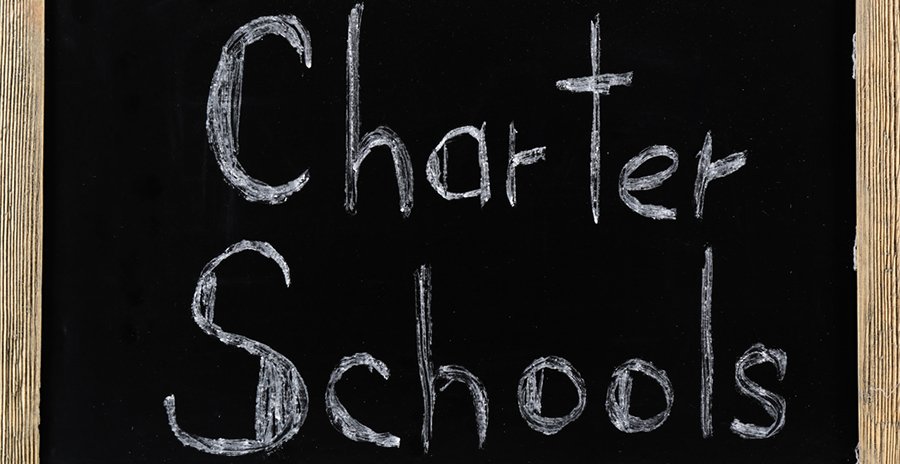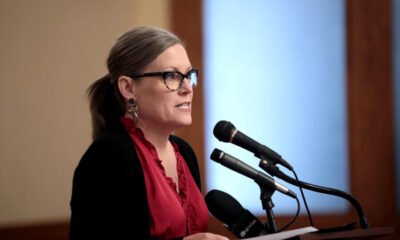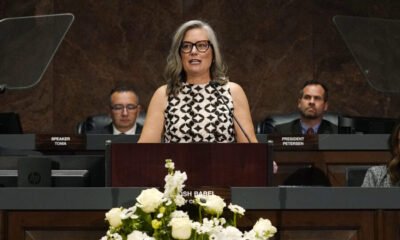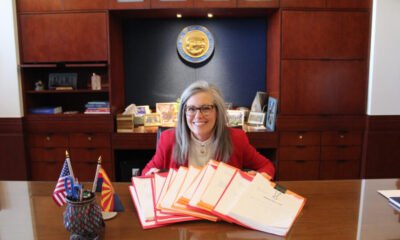arizona
Don’t Let Governor Hobbs Undermine School Choice!

In Arizona, less than one in three fourth-grade students are reading at grade level, raising urgent concerns about educational equity. Governor Katie Hobbs faces scrutiny for her approach to school choice amidst a significant education funding surplus. Advocates argue that the surplus should be directed towards policies that prioritize student welfare and educational opportunities.
Laurie Todd-Smith, a former public school teacher in Arizona, emphasizes the disparities faced by minority and low-income students. Data from 2022 reveals that Black and Hispanic fourth graders scored 23-24 points lower in reading than their white peers, while low-income students lagged behind by 25 points compared to their middle- and high-income counterparts. She asserts that families require better options to provide their children with equitable educational opportunities.
Hobbs’ recent actions, particularly the revocation of scholarship opportunities for nearly 50,000 students using the Empowerment Scholarship Account (ESA), have sparked controversy. Todd-Smith notes that while the governor may appear indifferent to the reading proficiency crisis, many Arizonians are genuinely concerned about the implications for children’s futures.
The governor argues that the cost of school choice initiatives is too high. However, Todd-Smith contends that such programs actually save taxpayer money. When students opt for an ESA and leave public schools, a large portion of their funding remains with the district, allowing the district to allocate those funds for other educational expenses. This aspect of school choice, according to Todd-Smith, has not been adequately acknowledged by Hobbs as she overlooks the potential of a new $4 million surplus designated for education.
Historical critiques of the school choice program often claim it burdens the budget, citing a speculative initial cost estimate of $65 million. Todd-Smith argues that this estimate was grossly exaggerated, as the program’s growing popularity has led to higher-than-anticipated costs. Nonetheless, she asserts that the cost attributed to the ESAs represents only a fraction of the state’s overall budget deficit.
Reflecting on her own upbringing in a large family, Todd-Smith articulates a personal commitment to advocating for educational choices. She recalls the struggles faced by families like hers, who were constrained to the local public schools despite diverse needs. Observations from her teaching career affirmed the necessity for varied educational pathways to accommodate different learners.
With twelve states already implementing universal school choice and achieving favorable outcomes, Todd-Smith expresses frustration over political resistance in Arizona. She urges opposition to Hobbs’ proposals that threaten educational choice, asserting that such policies hinder access to quality education for many families. Despite evidence of high parental satisfaction and improved student performance, she fears that partisan agendas could undermine progress.
In conclusion, Todd-Smith passionately calls for the preservation of universal school choice in Arizona. She advocates for reallocating funds from less essential areas to support education, encouraging parents to demand comprehensive options for their children’s education amidst ongoing political debates.
Laurie Todd-Smith serves as the director of both the Center for Education Opportunity and the Center for the American Child with the America First Policy Institute.




![Members of the Arizona House of Representatives vote during a third reading of nearly three dozen bills at the Arizona State Capitol on March 4, 2025. [Monica D. Spencer]](https://arizonanews.org/wp-content/uploads/2025/06/SR-347-Secures-53M-in-Third-State-Budget-Draft-Awaiting-400x240.jpg)
![Members of the Arizona House of Representatives vote during a third reading of nearly three dozen bills at the Arizona State Capitol on March 4, 2025. [Monica D. Spencer]](https://arizonanews.org/wp-content/uploads/2025/06/SR-347-Secures-53M-in-Third-State-Budget-Draft-Awaiting-80x80.jpg)











